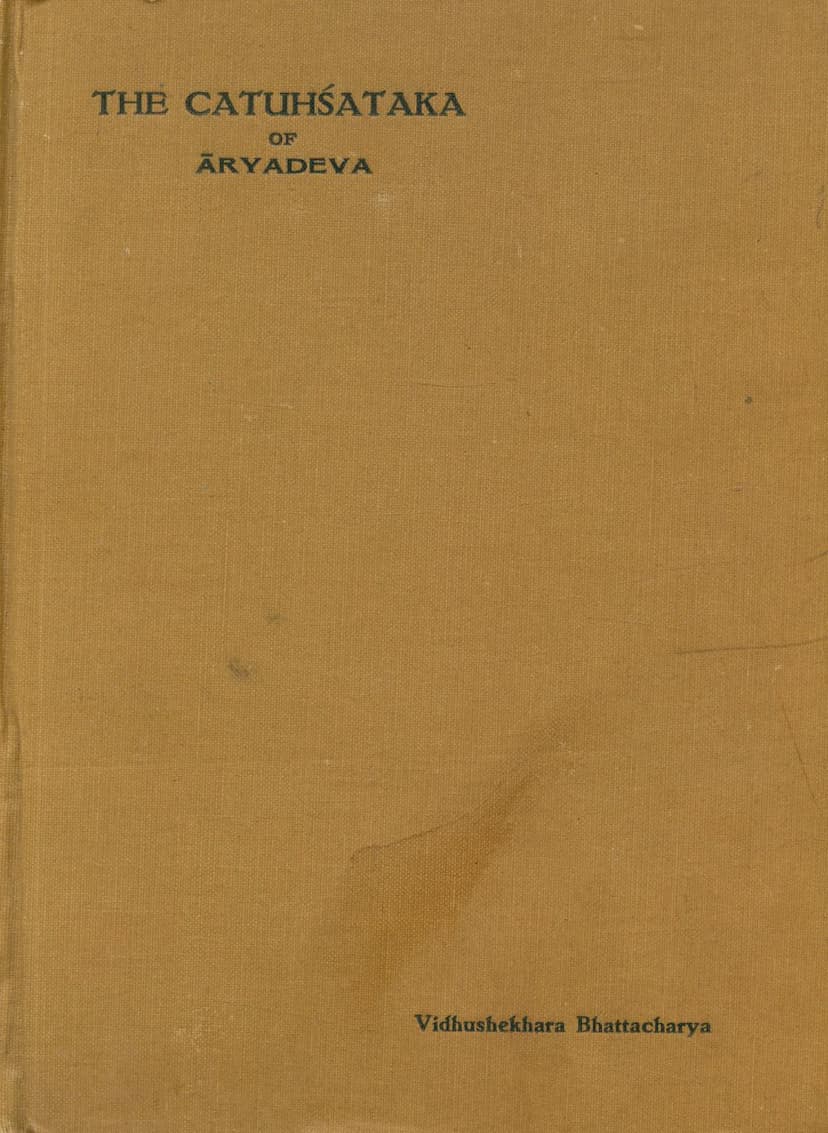Chatushatak Part 02
Added to library: September 1, 2025

Summary
This document is the second part of The Catuhshataka of Aryadeva, edited by Vidhushekhara Bhattacharya and published by Visva-Bharati Book-Shop in Calcutta, April 1931. This volume, Part II, focuses on Chapters VIII through XVI of Aryadeva's seminal work.
Key aspects of the work and its context as presented in the preface and introduction:
- Aryadeva's Catuhshataka: A significant Buddhist philosophical work, composed of 400 verses (karikas) organized into 16 chapters (prakaranas), with each chapter containing 25 verses. The author, Aryadeva, is considered a disciple of Nagarjuna and lived around 200-225 A.D.
- Commentaries: The work has two known commentaries: one by Candrakirtti and another by Dharmapala.
- Availability of Texts:
- Neither the original Sanskrit text of the Catuhshataka nor its commentaries are fully available.
- The complete work with Candrakirtti's commentary exists in the Tibetan version (Tanjur).
- The Chinese translation includes only the last eight chapters (IX-XVI), known as Sata sastra vai pulya (Kwan pai lun pan). Dharmapala's commentary also extends only to these chapters.
- The Current Edition (Part II):
- This volume reconstructs and edits the Sanskrit and Tibetan texts, with extensive extracts from Candrakirtti's commentary.
- It includes Chapters VIII to XVI, with Chapter VIII being included in this second part due to a modification in the original plan following Dr. P.L. Vaidya's earlier publication which covered the last nine chapters (VIII-XVI).
- The editor, Vidhushekhara Bhattacharya, relied on the "Black" or Narthang edition of Tibetan xylographs for both the original text and its commentary. He expresses gratitude to those who assisted in reading the often illegible xylographs.
- Bhattacharya critiqued Dr. Vaidya's 1923 publication, finding inaccuracies and reconstructing verses based on his own understanding and discussions.
- The volume contains the text of chapters VIII-XVI, followed by additions and corrections, and comprehensive indexes.
- Content and Structure:
- Chapters I-VIII: Logically and traditionally, these chapters are meant to cover the first half of the work, focusing on the gradual understanding of the highest truth through explaining ordinary life phenomena. Candrakirtti's commentary indicates that these chapters deal with:
- Chapter I: The five skandhas as dependent origination, not eternal.
- Chapter II: Non-eternal phenomena leading to pain and impurity.
- Chapter III: Impure phenomena to be relinquished, refuting the notions of "I" and "mine" (anatma).
- Chapter IV: Illusion making worldly things appear permanent, happy, pure, and as "I" or "mine." This wrong view necessitates Bodhisattva practices.
- Chapter V: Bodhisattva practices.
- Chapter VI: Abandoning passions or impurities.
- Chapter VII: Sense objects as causes for the origination and growth of klesas.
- Chapter VIII: Preparation of the disciple's mind.
- Chapters IX-XVI: These chapters (covered in this volume) discuss that phenomena lack inherent existence (ninsvabhavatva). The specific topics include:
- Chapter IX: Refutation of things regarded as eternal.
- Chapter X: Refutation of Atman (self).
- Chapter XI: Refutation of Time.
- Chapter XII: Refutation of Wrong Views.
- Chapter XIII: Refutation of the Organs of Senses and their Objects.
- Chapter XIV: Refutation of Adherence to Extremes.
- Chapter XV: Refutation of Compound Things.
- Chapter XVI: Discussion between the Teacher and the Disciple.
- Chapters I-VIII: Logically and traditionally, these chapters are meant to cover the first half of the work, focusing on the gradual understanding of the highest truth through explaining ordinary life phenomena. Candrakirtti's commentary indicates that these chapters deal with:
- Introduction by Candrakirtti: The preface includes an introduction from Candrakirtti's commentary, detailing Aryadeva's life, his connection to Nagarjuna, and outlining the progression of topics throughout the 16 chapters. Candrakirtti emphasizes the identity of Aryadeva's doctrine with that of Nagarjuna's Madhyamaka sastra.
- Acarya Dharmadasa: Candrakirtti mentions Aryadeva's use of examples (drstantas) from Acarya Dharmadasa in the first eight chapters, noting that these examples are absent in the latter eight chapters. The identity of this Dharmadasa is uncertain, though he is believed to have been a Buddhist.
In essence, this volume provides a critical edition of significant portions of Aryadeva's Catuhshataka, along with its crucial commentary by Candrakirtti, offering scholars access to these foundational Mahayana Buddhist texts and insights into the philosophical debates of the era. The editor's meticulous approach to reconstructing the texts from fragmented and often difficult-to-read sources is highlighted.